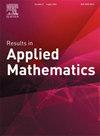一种新的n-L1图像恢复方法
IF 1.3
Q2 MATHEMATICS, APPLIED
引用次数: 0
摘要
本文提出了一种变分图像恢复模型和一种从噪声和模糊图像中恢复清晰图像的加速算法。该模型涉及求解一个高阶非线性偏微分方程,这可能是计算昂贵的。本文提出了用乘法器加速交替方向法(ADMM)求解约束最小化问题。该方法基于变量分裂方案和增广拉格朗日方法,具有快速收敛的特点。本文给出了该算法在一定条件下的收敛性分析。数值结果和比较表明,我们的模型和算法在计算时间方面优于一些最先进的图像恢复算法。本文章由计算机程序翻译,如有差异,请以英文原文为准。
A novel n-L1 image restoration approach
This article presents a variational image restoration model and an accelerated algorithm to recover a clear image from a noisy and blurred version. The model involves solving a high-order nonlinear partial differential equation, which can be computationally expensive. This paper proposes the use of the accelerated alternating direction method of multipliers (ADMM) to solve a constrained minimization problem. The method is based on a variable splitting scheme and an augmented Lagrangian method, resulting in a fast and convergent algorithm. The paper presents a convergence analysis of the proposed algorithm under certain conditions. Numerical results and comparisons demonstrate that our model and algorithm outperform some state-of-the-art algorithms for image restoration in terms of computational time.
求助全文
通过发布文献求助,成功后即可免费获取论文全文。
去求助
来源期刊

Results in Applied Mathematics
Mathematics-Applied Mathematics
CiteScore
3.20
自引率
10.00%
发文量
50
审稿时长
23 days
 求助内容:
求助内容: 应助结果提醒方式:
应助结果提醒方式:


